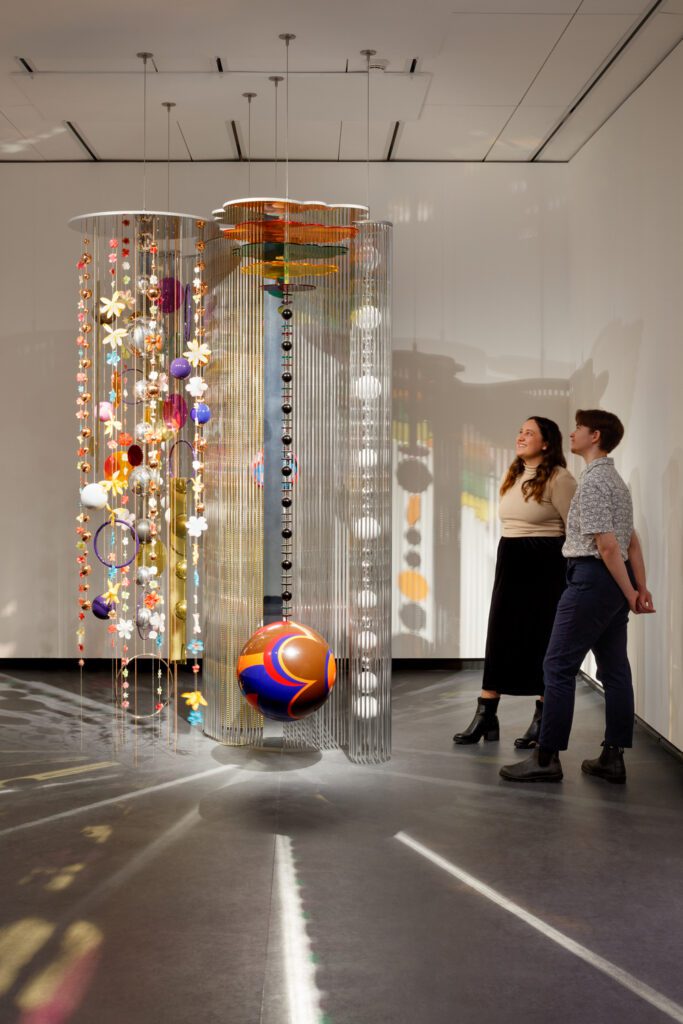Highlights from the “New” National Museum of Women in the Arts
By • October 26, 2023 0 1240

[Sponsored Content]
The National Museum of Women in the Arts (NMWA) is now open after a two-year, top-to-bottom renovation. The “new” NMWA features more gallery space, increased amenities, improved technology, and revamped education and library spaces. “We invite everyone to visit and learn more about the achievements of women artists from all over the world,” said NMWA director Susan Fisher Sterling. “We are so excited to share the results of this renovation and celebrate the ‘new NMWA.’”
In the collection galleries, nearly 40 percent of the works will be on view for the first time, ensuring there is something new for NMWA’s fans and first-time visitors alike. Highlights include:
Frida Kahlo, Self-Portrait Dedicated to Leon Trotsky, 1937
The artist’s signature style is evident in this self-portrait, the only Kahlo work on view in D.C. In this painting, she presents herself elegantly clothed in a long, embroidered skirt, fringed shawl, and delicate gold jewelry. The work commemorates the brief affair Kahlo had with the exiled Russian revolutionary leader Leon Trotsky shortly after his arrival in Mexico in 1937.
Joana Vasconcelos, Rubra, 2016
This monumental chandelier welcomes visitors into the soaring lobby of the historic building. Unabashedly flamboyant, vibrant, and dynamic, the sculpture is made from handmade wool crochet, lace, sequined fabric, gold tassels, delicate beaded ornaments, and Murano glass.
Cornelia Parker, Thirty Pieces of Silver (exhaled) Sugar Bowl, 2003
Parker’s sculpture features silver-plated flatware and vessels that have been flattened by a steamroller. Arranged in a circle, each gleaming object is individually suspended above the floor, and some quiver occasionally, as if by magic.
Beatriz Milhazes, Marola, 2010–15
This sculpture, weighing approximately 400 pounds, is a forest of beads, painted spheres, acrylic disks, metal tubes, and silk flowers that cascade from the ceiling. The artist’s vibrant aesthetic is shaped by the culture of her hometown of Rio de Janeiro.
Amy Sherald, They call me Redbone, but I’d rather be Strawberry Shortcake, 2009
In this work—by the artist who painted Michelle Obama’s official portrait — Sherald disrupts viewers’ readings of her subjects as Black by painting their skin in grayscale, metaphorically removing their “color.”
Jaune Quick-to-See Smith, Indian, Indio, Indigenous, 1992
This large collage draws a connection between the destruction of the environment and the erosion of Native American culture and land through Euro-American influence.
Lalla Essaydi, Bullets Revisited #3, 2012
At first glance, this large photograph appears to depict a woman reclining in an opulent gold setting. A closer view reveals the gilded finish is made from bullet casings. Essaydi used these to symbolize violence and express her concern about the expansion of restrictions on women following the Arab Spring, a widespread revolution which lasted from 2010 to 2012.
Timed tickets are available at nmwa.org. NMWA is open Tuesday through Sunday from 10 a.m. to 5 p.m.; until 8 p.m. on the third Wednesday each month; and closed on Mondays and select holidays. Visit for free on the first Sunday and second Wednesday of each month.

